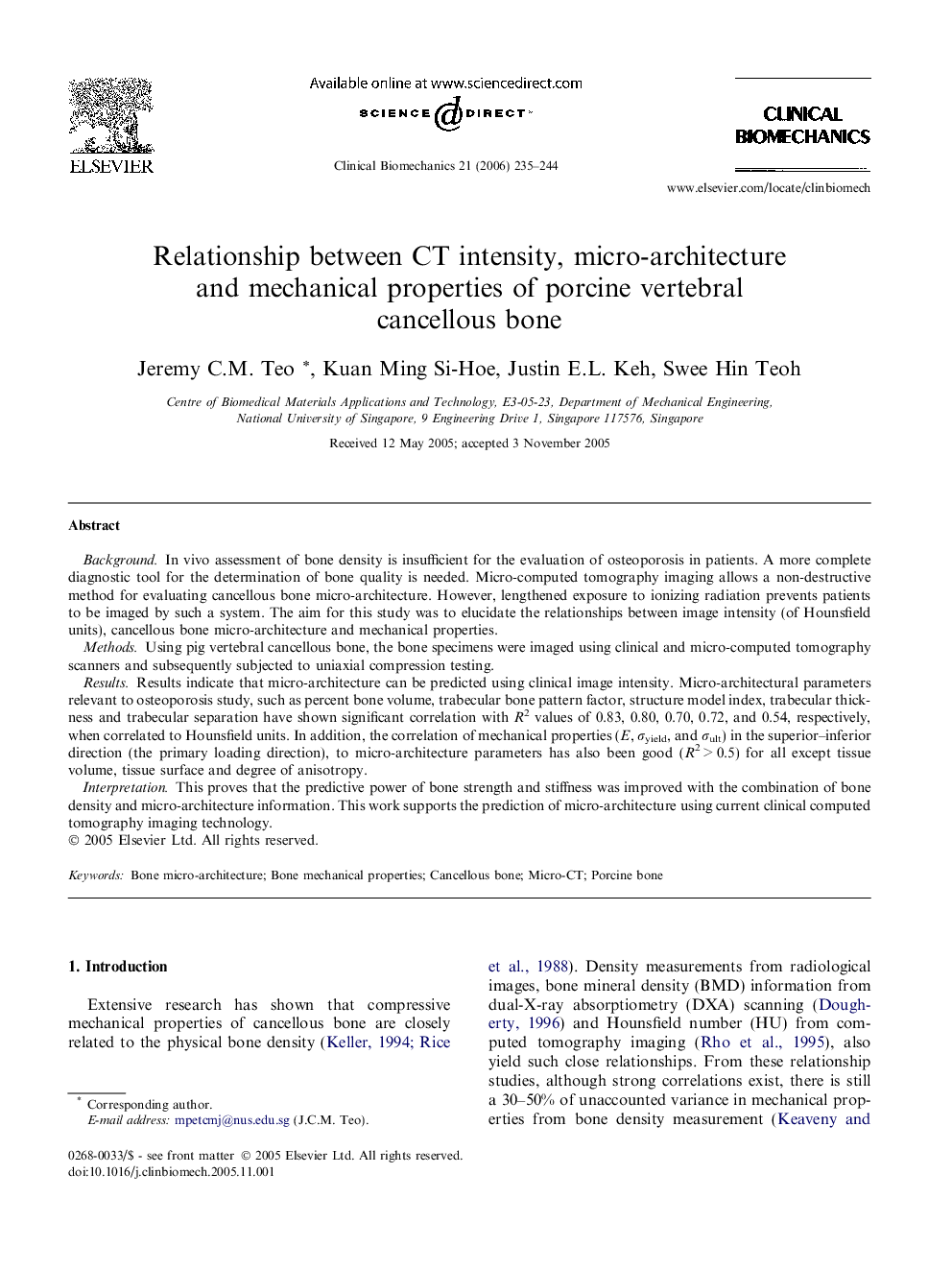| Article ID | Journal | Published Year | Pages | File Type |
|---|---|---|---|---|
| 4051648 | Clinical Biomechanics | 2006 | 10 Pages |
BackgroundIn vivo assessment of bone density is insufficient for the evaluation of osteoporosis in patients. A more complete diagnostic tool for the determination of bone quality is needed. Micro-computed tomography imaging allows a non-destructive method for evaluating cancellous bone micro-architecture. However, lengthened exposure to ionizing radiation prevents patients to be imaged by such a system. The aim for this study was to elucidate the relationships between image intensity (of Hounsfield units), cancellous bone micro-architecture and mechanical properties.MethodsUsing pig vertebral cancellous bone, the bone specimens were imaged using clinical and micro-computed tomography scanners and subsequently subjected to uniaxial compression testing.ResultsResults indicate that micro-architecture can be predicted using clinical image intensity. Micro-architectural parameters relevant to osteoporosis study, such as percent bone volume, trabecular bone pattern factor, structure model index, trabecular thickness and trabecular separation have shown significant correlation with R2 values of 0.83, 0.80, 0.70, 0.72, and 0.54, respectively, when correlated to Hounsfield units. In addition, the correlation of mechanical properties (E, σyield, and σult) in the superior–inferior direction (the primary loading direction), to micro-architecture parameters has also been good (R2 > 0.5) for all except tissue volume, tissue surface and degree of anisotropy.InterpretationThis proves that the predictive power of bone strength and stiffness was improved with the combination of bone density and micro-architecture information. This work supports the prediction of micro-architecture using current clinical computed tomography imaging technology.
